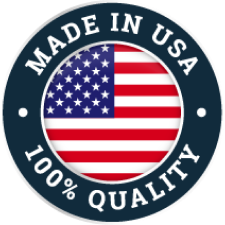
In a world increasingly aware of environmental concerns and public health, regulatory compliance regarding air quality standards has become a central issue for governments, industries, and individuals alike. Ensuring clean and safe air is not only a matter of environmental responsibility but also a crucial factor in maintaining public health and well-being.
Understanding Air Quality Standards
Air quality standards are the legal limits set by governments to control the concentration of specific air pollutants. These standards are established based on scientific research and are designed to protect human health and the environment. Common air pollutants regulated by standards include particulate matter (PM), ground-level ozone (smog), sulfur dioxide (SO2), nitrogen oxides (NOx), carbon monoxide (CO), and lead.
The Importance of Compliance
Public Health Protection: Compliance with air quality standards is primarily about safeguarding public health. Air pollutants can have serious health consequences, including respiratory problems, heart disease, and even premature death. Meeting these standards helps reduce the risks associated with exposure to harmful pollutants.
Environmental Conservation: Air pollution doesn’t just affect human health; it also harms the environment. Compliance with air quality standards is essential to protect ecosystems, preserve biodiversity, and mitigate climate change.
Legal Obligations: Governments at various levels, from local to national and international, have established laws and regulations to enforce air quality standards. Non-compliance can result in legal consequences, including fines and sanctions.
Industry and Business Responsibility
Industries and businesses play a significant role in maintaining air quality standards. Many industries produce air pollutants as byproducts of their operations, such as factories emitting industrial emissions or vehicles emitting exhaust gases. To ensure compliance, businesses must:
– Invest in pollution control technologies and practices.
– Monitor emissions regularly.
– Maintain accurate records of emissions data.
– Report emissions data to regulatory authorities as required.
The Role of Technology in Compliance
Advancements in technology have made it easier for businesses to comply with air quality standards. From sophisticated monitoring equipment to cleaner energy sources and emissions-reduction technologies, technology provides the tools necessary to achieve and maintain compliance.
A Collective Responsibility
Regulatory compliance and adherence to air quality standards are not just the responsibility of governments or industries. Individuals can contribute by reducing personal emissions through practices such as using public transportation, reducing energy consumption, and properly disposing of household chemicals.
In conclusion, air quality standards are vital for protecting public health and the environment. Regulatory compliance is a shared responsibility that involves governments, industries, and individuals. By working together and embracing cleaner technologies and practices, we can ensure a breath of fresh air for ourselves and future generations.
